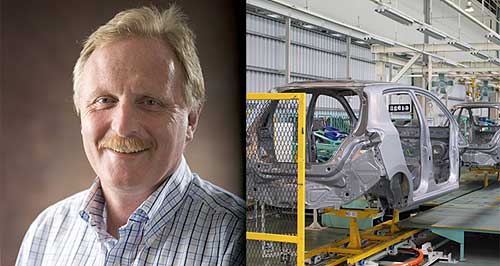Make / Model Search
News - General NewsAutoCRC defends offshore research dealsAuto pilot: New AutoCRC chief executive James Walker says links with Asia will help Australian parts-makers. Local industry has some challenges ahead of it, says new AutoCRC chief4 Feb 2013 By IAN PORTER THE new chief of the government-funded automotive research centre, AutoCRC, has defended the company’s move to strike up alliances with partners in Thailand and Malaysia. In addition, Melbourne-based AutoCRC – full name Co-operative Research Centre for Advanced Automotive Technology – is negotiating a similar arrangement with a potential partner in China. In his first interview since taking the reins in October, new chief executive Jim Walker said it made sense to get closer to the automotive sectors in developing Asian countries, despite the potential impact on Australia’s car manufacturing industry from imports from those countries. Thailand produced more than two million vehicles last year, eight times Australia’s output, taking 16 per cent of the Australian market with its exports. Malaysia produced almost 600,000 vehicles, more than twice Australia’s output in 2012. Mr Walker, a former vice president of Boeing Australia, said the future of the Australian automotive sector depended on the ability of Australian parts-makers to integrate into the growing automotive industries in neighbouring countries. “Even the casual observer in the street would understand that the local auto industry has probably got some challenges ahead of it,” he said. Given the depressed level of production in Australia – currently around 50-year lows – Mr Walker said local parts makers had to look at markets outside Australia to ensure the long-term sustainability of the Australian auto components sector. He said the need to crack offshore markets reflected the sharp reversal in the Australian industry’s competitiveness over the past 13 years. In 2000, the Aussie dollar was around US50 cents and Australia was a low-cost environment for making cars and parts. Australian parts makers were winning lots of export orders and demand for locally produced cars was high, he said. “Five years ago we started to become a very high cost environment in which to do manufacturing,” Mr Walker said. “In fact, we are now the third most expensive country in the world to do manufacturing.”“That means parts-makers could no longer just make what everybody else makes and simply focus on efficient production. “That’s not going to get you success in a high-cost environment.” Mr Walker said manufacturers still needed to focus on lean manufacturing, high productivity and efficiency, but now they also needed to bring their own intellectual property (IP) if they were going to win business. “You need to innovate, have unique IP and you need to be creating IP, and that happens through research,” he said. “And that is what the AutoCRC was designed to do: help local parts-makers develop unique technology and processes to give them an edge and help them join the global parts supply chain.” Mr Walker said the partners in Thailand and Malaysia had paid to acquire stakes in the AutoCRC that, in turn, gave them the right to instigate research projects using the AutoCRC’s network of research institutions. This includes the CSIRO and universities across the country. “The Malaysian Automotive Institute – part of a government department – has invested in this AutoCRC because they can see if they link into some of our research programs, it is going to benefit their industry,” he said. “But we don’t necessarily start a Malaysian project unless we have Australian suppliers involved in that project. “If we do some research with MAI and, say, Proton, we try to involve an Australian company. That creates intellectual property for the Australian company and also a relationship with Proton.” There were no guarantees that the Australian company would benefit from any orders if the new technology or process went into production, Mr Walker said, but the Australian company would hold the IP, or a share in it, and the capability to use it. Funded by a $38 million federal government grant, seven-year-old AutoCRC has done or assisted more than 80 research projects, of which 95 per cent were successfully completed. A notable success includes the development of a technology allowing the use of plastic reflectors in rear vision mirrors, eliminating glass and saving about half a kilo. Indian company SMR, which owns a mirror factory near Adelaide, supplies these mirrors for Ford’s F350 pick-up in the United States. AutoCRC helped vehicles interiors group Futuris develop a car seat knitted out of impregnated Kevlar. It remains flexible during transit and takes the shape of a seat when it is heat-treated, just before being trimmed and installed. AutoCRC has also collaborated with Holden and research institutions in the development of a new riveting technique for joining aluminium and steel and a better way of welding aluminium parts. Both of these have been put into production, here and overseas. Last year, AutoCRC won its bid for a new round of government funding, being awarded $26 million for another seven-year program. Along with contributions from AutoCRC partners, this will help fund around $100 million of research.  Read more |
Click to shareGeneral News articlesResearch General News Motor industry news |










Facebook Twitter Instagram